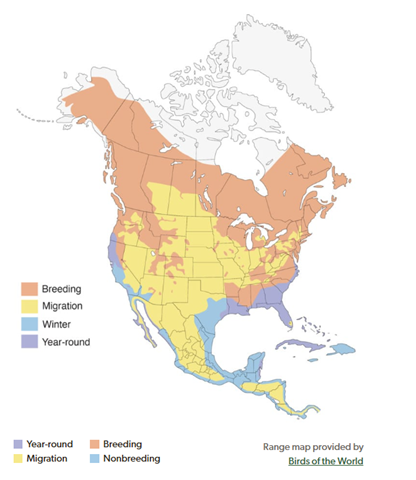OSPREYS - "FISH HAWKS" EXTRAORDINAIRE!
- ACLT American Chestnut Land Trust
- Mar 28
- 6 min read
By Judy Ferris, Master Naturalist & Guest Blogger
The Ospreys have returned to the Chesapeake Bay! Newly arrived from Florida, the Caribbean, Central America, and South America, their screeching and sky-dancing are one of the true signs of spring. This year, many Ospreys checked our local weather forecast and delayed their arrival. A few hardy Ospreys braved the cold and arrived in the first two weeks of March. Saint Patrick's Day (March 17), however, is when the Ospreys really start to pile in and make themselves heard.

Those of you who see Ospreys every spring, summer, and early fall, may take them for granted. Did you know that Ospreys are found almost all across the globe? They are absent only in Antarctica and many oceanic islands. Amongst raptors only Peregrine Falcons have a wider range on the planet. Not only that, historically, the Chesapeake Bay supports the largest concentration of Ospreys in the world.


Ospreys generally mate for life. In spring, the males are usually the first to arrive. They stake out a nest site and keep other males away. Females arrive a bit later. How do you tell a male from a female? A male generally has a completely white breast. A female usually has a 'necklace' of brown feathers on her breast. When the two meet, the male goes to great lengths to impress his mate. First he catches a fish (bigger is always better!) then he 'sings' (sounds like shrieking to us humans) and does a sky dance while displaying his catch. His dance takes him high in the air where he hovers and then drops down a bit, over and over, until he finally swoops down to the nest. Very impressive!
Now it's time to work on the nest. In some cases, there is already a nest present. But it needs remodeling! Nests built last year in exposed sites like channel markers have likely been swept clean by powerful winds. They need to be entirely rebuilt. Males do the heavy lifting and haul in large sticks to create the structure of the nest. The female takes charge of preparing the nursery - getting just the right wallpaper, nice bits of soft material, and small sticks.
The female lays 2 or 3 eggs over a period of several days. She incubates the eggs for the majority of the next 35 - 40 days. Once the eggs hatch, she stays an additional 10 days on the nest until the chicks are ready to face the world. For this entire time the male brings fish to the female. The baby Ospreys quickly learn to feed themselves on fish brought by their parents. The new-born ospreys will not leave the nest until they are 7-8 weeks old. The youngsters will catch their first fish 2 to 8 weeks after fledging. That should keep their parents busy for a while!Ospreys are (now there's a word to remember!) - fish eaters. Fish comprise 99% of their diet. Although adult Ospreys make it look easy, catching fish is no easy matter. It requires skill and special adaptations. Ospreys and Owls are the only raptors whose outer toe is reversible. This allows them to grasp their prey with two toes in front and two toes in back. Very handy when you are catching slippery fish in the water!

Osprey also have backward-facing spikes on the underside of their toes to enhance their grip. Add to that oily plumage which prevents the bird from getting water-logged and close-able nostrils that keep out water during dives, and you have a bird perfectly designed to be ... a piscivorous fish-eating hunter!

Let's go hunting with an Osprey! If you are just fishing for yourself you may only need to perch in a tree and wait for an unsuspecting fish to pass below. If you are hunting for your family, however, you may find more fish by flying slowly above the water at a height of 30 to 130 feet. If an Osprey sees something of interest in the water it may hover briefly to check it out. Once a target fish is detected, the Osprey tucks its wings and drops toward the water. As it dives, the bird adjusts the angle of its flight to account for the distortion of the fish's image caused by refraction in the water. Wow!
The bird makes the final plunge with feet and head extended forward. It doesn't rush to resurface or hurry to take off, but takes some time to get a good grip on its fish. As they take to the air, you see the classic Osprey fish-hauling pose with the fish's head pointed forward to streamline flight. Watch the 1-minute video below or go to: https://youtu.be/VmLVEb9Tt-E?si=EClZf8ciXzI-sD4a
https://youtu.be/VmLVEb9Tt-E?si=EClZf8ciXzI-sD4aNote that the bird in the video appears to have been almost dragged underwater, but the Osprey knows what it's doing. It waits for that incoming second wave to push itself upward, then to takes off as the wave passes behind it. Amazing! FUN OSPREY FACTS: *** Both Male and Female Ospreys can be superlative hunters *** *** On average, an Osprey catches a fish in about 1 in every 4 dives. *** *** Sometimes their success rates rise as high as 70%. *** *** The average time an Osprey spends hunting before catching a fish is about 12 minutes. *** If you were to compare an Osprey to a Bald Eagle, pound for pound, the Osprey would be the stronger bird. It can lift up to 40% of its body weight. A Bald Eagle is larger and weighs in at 10 -15 pounds but can only carry about 33% of its body weight. With its broad wings, however, the eagle can fly faster than an Osprey, much to the dismay of our piscivorous friend.

In the photo above, an immature Bald Eagle is chasing an Osprey which is carrying a fish. The Osprey cannot outrun the Eagle. The Eagle will bully the Osprey until it finally drops that coveted fish. In a split second, the Eagle sees that the fish is hurtling downward. It makes a quick course correction and swoops down to grab the hapless fish in mid air with its talons. The poor fish drops less than 50 feet before it is recaptured by the Eagle. Tsk tsk tsk... Such bad behavior by our national bird! Needless to say, there is little love lost between these two raptor species.

Our Chesapeake Bay Ospreys usually remain here until October. The southerly migration path of East Coast Ospreys in October may be hundreds of miles wide as the birds work their way down the east coast. Eventually the path narrows sharply as it approaches Florida. Migration continues south through Florida or to Cuba/Hispanola. Some birds decide that this is far enough and over-winter in Florida and the Caribbean. The remaining Ospreys (the majority) go straight across the Gulf of Mexico to Venezuela - a leap of 500 miles. During migration, an Osprey conserves its energy by making use of 'thermals' (up-welling mini-cyclones of warm air). The Osprey uses the up-welling current to get as high in the air as possible, then coasts down off of it until it catches the next up-welling thermal. Less wing flapping = less energy used. An Osprey can travel as far as 500 miles per day, but 100 miles is more common and allows for sight-seeing and fishing. Upon arriving in South America, the birds fan out across the Amazon Basin and the huge Pantanal wetland of Bolivia, Paraguay, and Brazil where they will spend the 'winter'. Some adventurous Ospreys even range as far south as Argentina. This long migration works just fine for the adults and 2nd or 3rd year juveniles who make the journey. Surprisingly, however, the first-year Ospreys are left behind! Why? The truth is, these first-year birds probably need extra time to hone their fishing and flying skills. They should also put on more fat for the long journey ahead. A few weeks after their parents have departed, traveling by instinct alone, the young Ospreys make their way to South America - a journey of up to 5,000 miles! Once in South America, these first-year birds will likely stay a year and a half before migrating north. The arrival of Ospreys in your neighborhood is a great way to usher in spring. Take a moment to admire and appreciate these wondrous, skillful "fish hawks" next time you see one!

References:
"About Ospreys" - online published by William and Mary's Virginia Institute of Marine Science.
Cornell's "All About Birds" - online bird encyclopedia
Wikipedia - excellent write-up on Ospreys.

Don't Miss the 2025 Maryland Osprey & Nature Festival!
Saturday, April 5, 202510am-4pmTown of North Beach, MD
From the Festival Website:
If you love birds, wildlife, and nature, or just want to learn more, please come out and be a part of this wonderful Festival for a great cause. It is an event for the entire family and people of all ages. See a live raptor up close, enjoy vendors on the boardwalk, meet Oscar the Osprey and get a selfie, and move through the child-focused nature activity stations, take part in the lecture series.
ACLT WILL BE AT THE FESTIVAL! Stop by the grassy area in front of the library (on the bayside) and play a round (or 2) of our Bird Migration Game! Learn about the hazards birds encounter while migrating - and what we can do to help them get to where they're going. We'll have plenty of other games, exhibits and activities too!

Comentários